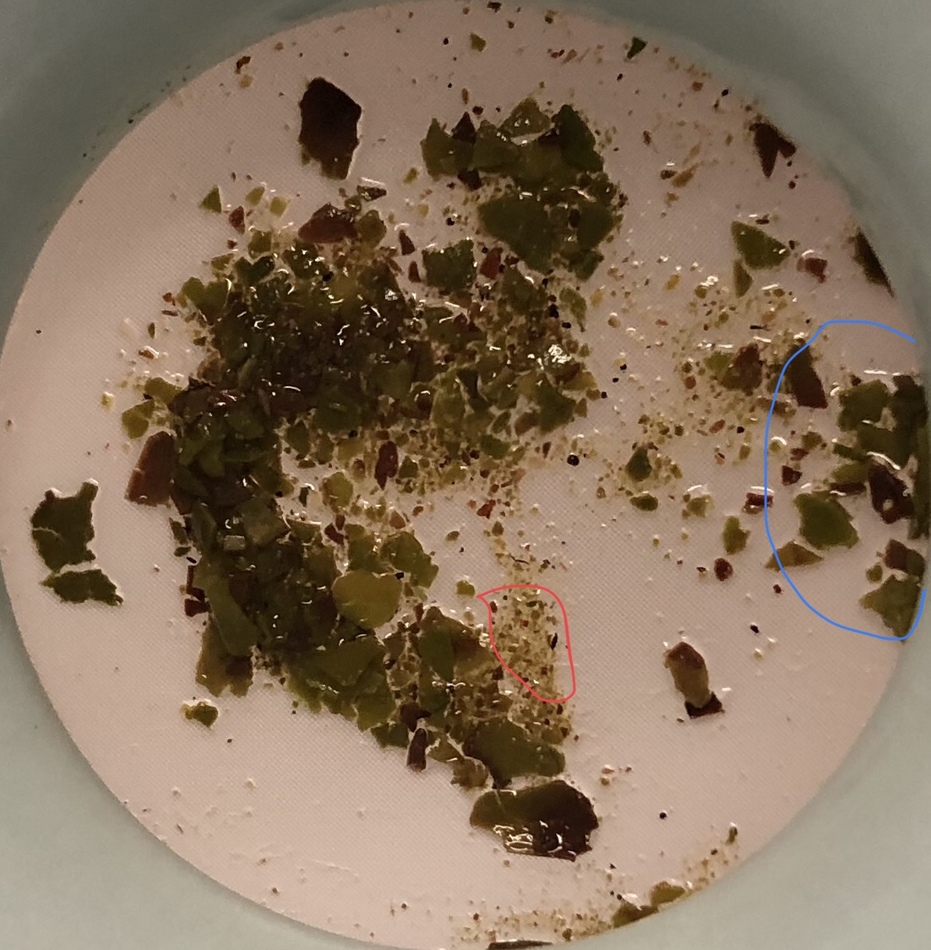Page 1 of 1
Downsides of using a very fine filter
Posted: Tue Nov 21, 2017 11:06 am
by d.manuk

- 5D78A5C6-4E86-4B88-8241-73B67CE7BD29.jpeg (303.56 KiB) Viewed 8550 times
I’ve been wondering if the tea particles circled in red would be beneficial to drink, which get caught in my very fine filter. The picture is after a session of a lower grade green oolong (it shed a lot of product), but I drink a good amount of green teas as well that also leave behind a lot of fuzzy residue that I feel might contribute to the flavor (or health) of the tea that I’m missing out on.
I don’t think anyone should be drinking the blue circle, as it would just bring unnecessary stomach discomfort.
What do you think?
Re: Downsides of using a very fine filter
Posted: Tue Nov 21, 2017 2:42 pm
by debunix
I know that I enjoyed eating a tea-leaf 'salad' during my tasting & tour at the Tea Farm. When seasoned appropriately, they're just another leaf for salad.
But I don't routinely eat tea leaves or worry about what I'm missing out on or letting pass through the filters. I don't think the bits of fine leaf add or detract much from my enjoyment of a cup of tea.
Re: Downsides of using a very fine filter
Posted: Tue Nov 21, 2017 9:05 pm
by pedant
aside from matcha...
i don't think that drinking tea dust adds anything good to the experience.
flavor wise, those tiny particles get over-extracted pretty quickly, and it's the soluble stuff that went into the liquid that adds to flavor.
however, i usually don't bother with filtering.
Re: Downsides of using a very fine filter
Posted: Tue Nov 21, 2017 11:49 pm
by Bok
I second the above, not really good or bad or anything to worry about too much… To me this happens when I reach the bottom of the pack, in those cases I brew more attentively to not overbrew, as the small stuff extracts quicker than a full leaf. Basically like a tea bag.
Never really understood those obsessed people who insist on a perfectly clear tea soup.
Re: Downsides of using a very fine filter
Posted: Mon Dec 11, 2017 12:36 pm
by Chip
I remember years ago before Kyusu were readily available ... I am guessing 2006, Rishi introduced a cream colored clay Kyusu that had an extreme micro mesh sasame (clay) screen that they touted was GREAT for and made for brewing fukamushi. I purchased one because it was a real deal Kyusu and not a low end piece of crap from China which was about all I had at the time.
I remember a lot of teachatters purchased it as well. And fukamushi was the craze.
But the problem was, the logic was flawed, the micro screen blocked 99.9% (just guessing) of the particles, so even the finest particles could not get through.
2 things wrong with that, brewed fukamushi SHOULD have lots of finer particles in the poured brew. And the screen would instantly CLOG up in a major way, to the point the liquid could not pass through. A really frustrating mess.
At the time, I think we all blamed the tea, but with time comes knowledge and hopefully wisdom ... an extreme sasame micro screen is NOT good for brewing fukamushi.
I like to use the direct wall screens with careful pouring. Or a clay half "ball filter" (sorry the name escapes me at the moment) that typically have course screens that a sasame.
Re: Downsides of using a very fine filter
Posted: Thu Dec 21, 2017 7:30 pm
by Hotleafwater
The only downside that I have ever had from using a filter is some slight texture loss. From doing some side by side comparisons I have noticed that when I don't use a filter the tea comes out a bit thicker, this generally with puerh.
Re: Downsides of using a very fine filter
Posted: Sat Dec 30, 2017 6:38 pm
by Baisao
I used to use an external filter but began to feel like the flavor and texture changed when using one, so I stopped. I had two filters: one for sencha and one for puerh.
As time went on I began to notice that I got less leaf in my soup as the quality of tea improved and as my pouring technique improved.
I tend to not pour fast for Japanese greens, so the leaf mass comes to the bottom of the internal filter of the teapot and the tea comes over the top, never clogging the internal filter.
I stopped having this problem with puerh as I began using better quality tea, with less dust. I never needed a filter with oolong.
For reference: I use non-filtered Yixing and Chaozhou teapots for most oolong and puerh; I use internal filtered kyusu for Japanese greens.